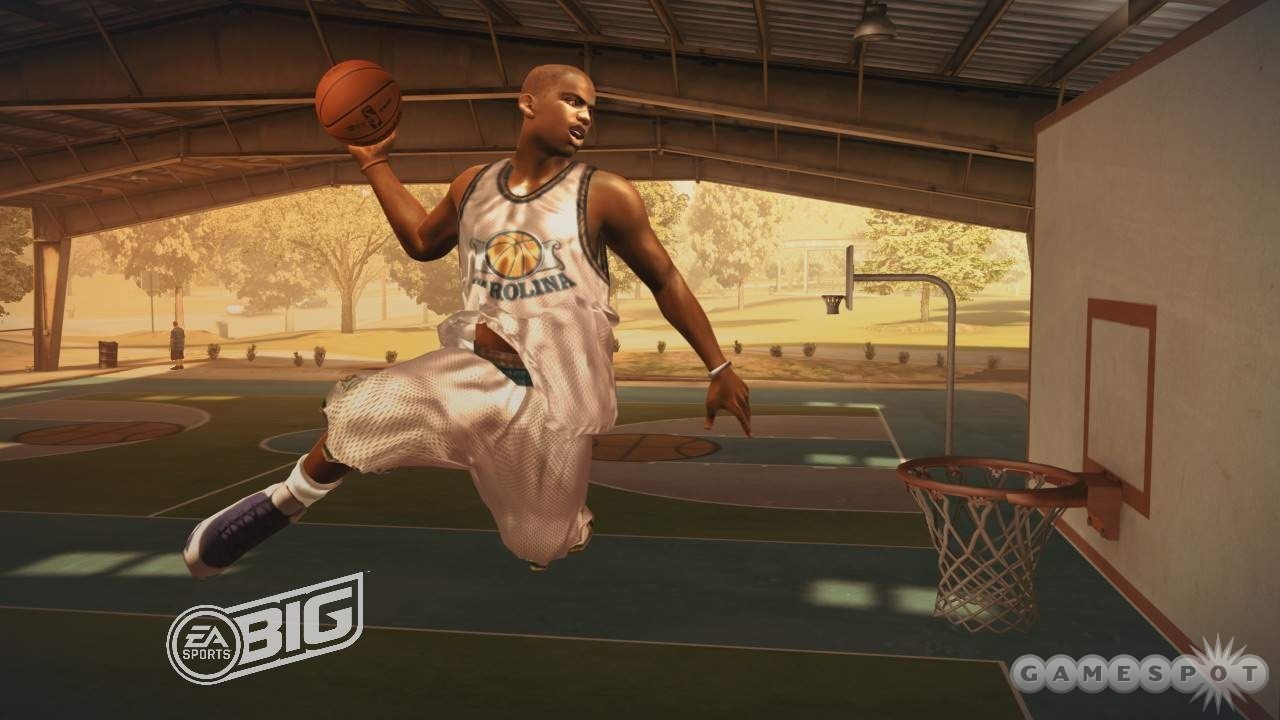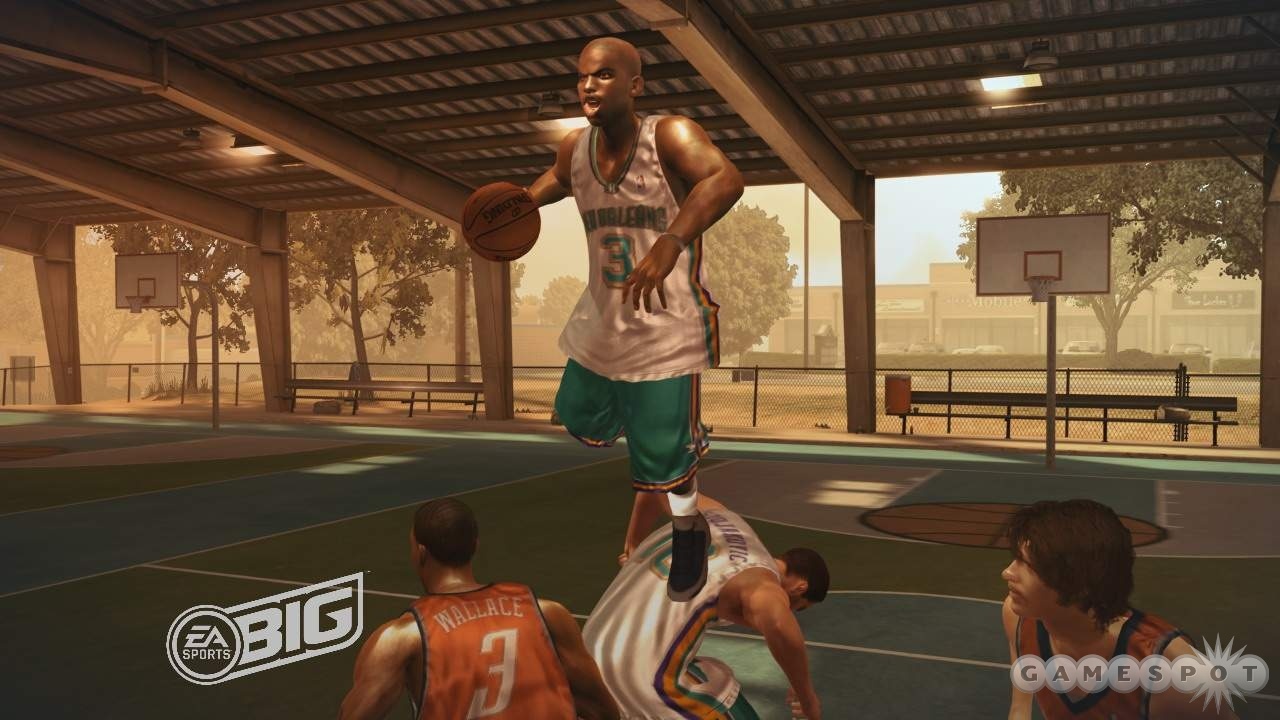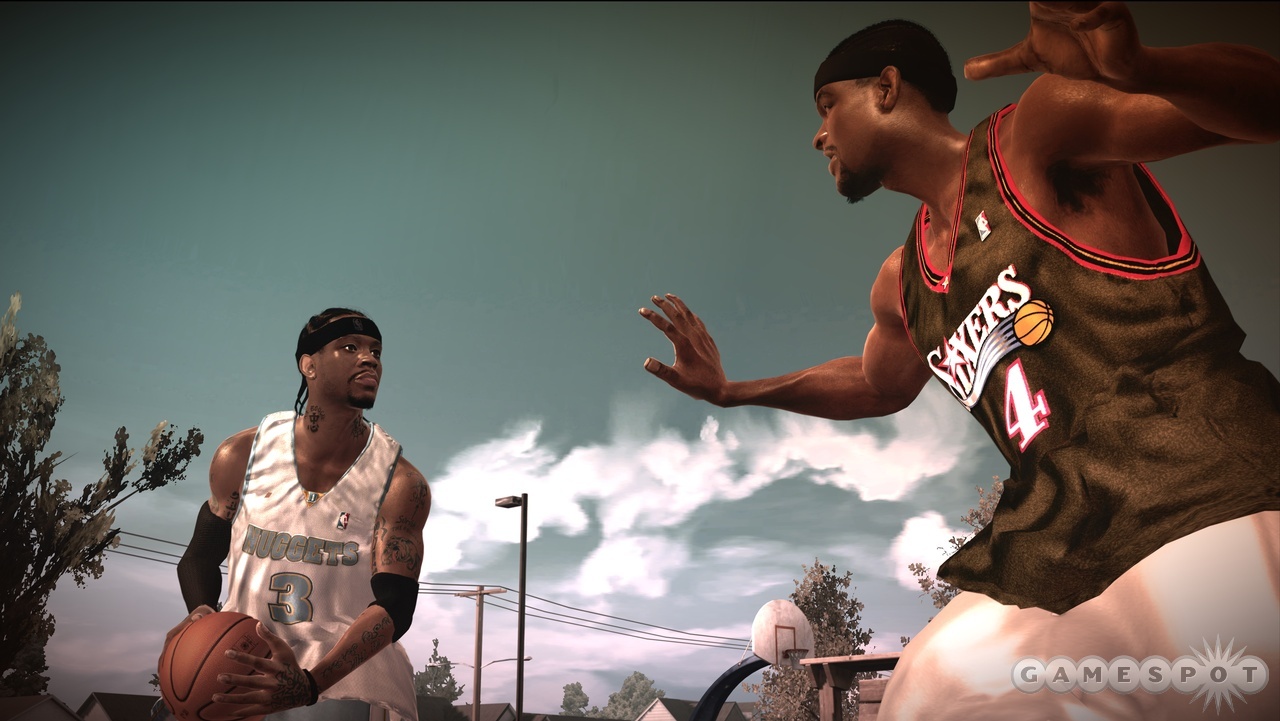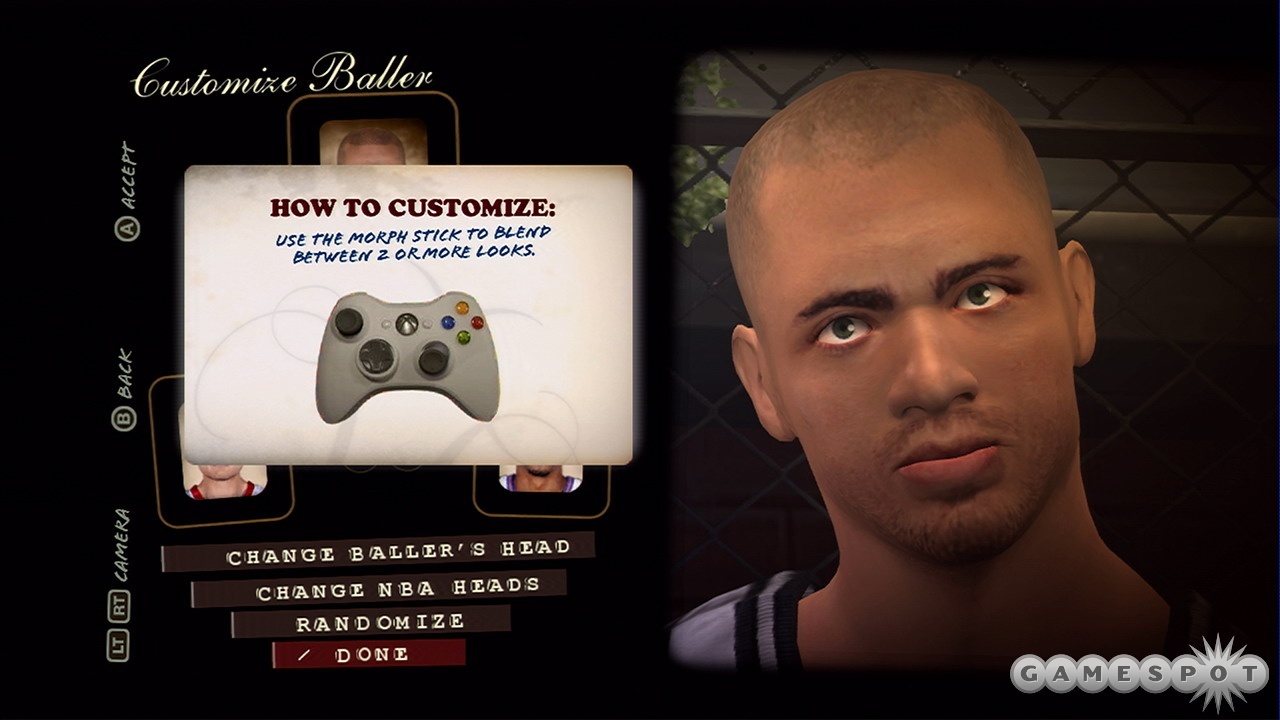NBA Street Homecourt Q&A
We chat with NBA Street Homecourt producer Todd Batty about the development of the upcoming arcade hoops game.
The NBA Street series has been ripping up the b-ball courts for years now, and now that the Xbox 360 and PlayStation 3 consoles are in full effect, it follows that EA Sports Big's popular series would ready itself for the next generation. As we've seen in prior previews, the game continues the over-the-top antics from the previous entries in the series--though, if anything, the rim rocking has been ratcheted up a few notches this time around. We recently spoke with Homecourt producer Todd Batty about the game's development, how they did some of those sick dunks, and his favorite tricks in the game.

GameSpot: Let's start with some thoughts on the previous game in the series, NBA Street V3. What did you like about that game, and where do you think it needed improvement?
Todd Batty: We thought the move to next-gen hardware provided us with an opportunity to start with a clean slate, so we actually looked to all three previous versions of Street for inspiration when building Homecourt. Ultimately we wanted to capture the innovation and easy pick-up-and-play aspect of [NBA Street], the raw gameplay feel and fun factor of [NBA Street Vol. 2], and some of the refinement of [NBA Street V3]. Fans of the series will definitely recognize features from all three previous games in NBA Street Homecourt, along with a healthy dose of new innovation.
GS: Because this is the next-gen debut of the game, how much of Homecourt has been built from the ground up for the PS3 and/or Xbox 360? From a features and development standpoint, what does more-powerful hardware mean to a game like this?
TB: The game has been completely rebuilt for both the 360 and the PS3. Early on in development we looked at the possibility of porting the V3 code base onto the next-gen hardware and starting from there, but ultimately [we] decided in favor of a complete rewrite. The extra horsepower of the new consoles allowed us to create an incredibly fast, responsive animation control system, arguably the best-looking NBA players ever built, and stunningly detailed 360-degree environments--all while still running at a silky smooth 60fps on both consoles.
GS: EA Sports has been shifting many of the controls for its games to the two analog sticks--as in NBA Street v3--but in Homecourt, the tricks have moved back to the face buttons. Why make the switch, and what can the current system do that the old one couldn't?
TB: We wanted to create a gameplay experience that could be enjoyed by casual gamers and hardcore gamers alike, and [we] felt as though returning tricks back to the face buttons was a change that would help support this goal. Once we started experimenting with the press-hold-release system that we use throughout NBA Street Homecourt, we realized that we could have a ton of gameplay depth without complex controller inputs. This in turn created a system that was very simple for a new or casual consumer to pick up and play, yet still had enough sophistication and depth that it takes time for a hardcore user to master. It also allows for seemingly unlimited strings of trick combinations that flow from one to the other with remarkable responsiveness.
GS: Some of the tricks, especially the double dunks, are insane. Were those stunts animated, mo-capped, or some combination thereof?
TB: [Laughing] We've been asked that question a lot since releasing preview video clips of the game. All I can say is that we used a wide array of mo-cap talent for this title, from streetball star Joey "King Handles" Haywood, to NBA Star Carmelo Anthony, to a former NBA team mascot. Combine their motion capture with some creative animation direction and the talent of some of the best hand-key animators in the world, and the result is what you see in NBA Street Homecourt.

GS: Defense is a big part of gameplay in Homecourt, particularly physical contact between players. How did you go about striking a balance between over-the-top offense and effective defense in development?
TB: NBA Street has always been about fun-to-play defense, and we thought the addition of physical play would provide a great new weapon for defenders. One of the biggest effects of this addition is that it has finally made a physical defender like Ron Artest a valuable commodity to have on your team. The most physical players in the league can even push around ball carriers from behind, which is really tough to guard against on offense and makes for some great strategic gameplay. As far as keeping things balanced goes, we made sure to not add in any offensive features until we already knew what the defensive "counter" would be. This allowed us to maintain a fairly even balance throughout development.
GS: The look of the game--particularly its lighting and mood--is more low-key than we expected, giving the game a real old-school feel. How did the visual style for Homecourt evolve?
TB: The visual style really grew out of the decision to re-create the hometown playgrounds of NBA Superstars. Our goal was to give consumers an intimate look at the NBA Stars, and [we] felt like the personal nature of documentary film would be a great inspiration for our art direction throughout the game. The old-school colors were inspired by late '70s and '80s home movies and photo albums. We wanted people to get a nostalgic feel and connect with the stars as real people, making the relationship between NBA Players and streetball more meaningful than it has been in the past.

GS: Tell us about some of the different courts we'll be playing on.
TB: Keeping with our Homecourt concept, we decided to focus less on presenting famous streetball courts like Mosswood or the Cage and more on the hometown courts of some of the NBA's most famous players. Included in the game are meticulously detailed replications of the courts that Carmelo Anthony, Rip Hamilton, and Chris Paul grew up playing on while honing the skills they display every night in the NBA. The variety of courts is really amazing, from an urban oasis in West Baltimore to a school yard in a Pennsylvania steel town to the sprawling basketball mecca of Venice Beach. We even pay homage to one of the most famous courts in basketball cinema, the gym from the movie "Hoosiers." Overall, there are enough courts and environments to keep the game feeling fresh for a long time.
GS: What's new in online for Homecourt? Are there ties between the single-player and the online game? What can you tell us about Xbox Live achievements in the game?
TB: Our primary focus for online was actually ensuring that the gameplay experience of online matched that of offline. Because of the multiplayer appeal of NBA Street, massive efforts went into ensuring the responsiveness that characterizes our gameplay was maintained when playing online. You can also take your created baller online, which is going to be a big component of online play. Because created players are leveled up based on their playing style, consumers are able to create a unique baller to take online that will potentially have better skills than the NBA stars. Users can also work to create a team of created ballers to take online, completely owning the street with a fully customized team.
In regards to achievements, we wanted to reward gamers for executing some of the new gameplay moves. For example, performing five jump-off dunks in one game is called "Dunkalicious" and will get you 50 points. We also wanted to support the single-player journey with Xbox Live achievements, so you will also find some [help] along the way to putting your hometown on the map.
GS: What about character customization and unlockables?
TB: We wanted the user to be able to take pieces of their favorite NBA stars and mix them together to create a unique look. Users are able to customize their faces through the use of our morph stick, allowing you to mix three ballers' faces into virtually limitless unique combinations. You can also customize your player's attributes by performing various trick moves, dunks, and other gameplay actions during Homecourt Challenge. For example, if your created baller starts out with a limited ability to perform trick moves, the more you attempt tricks in game the higher your player's "Handles" rating gets. Finally, there are five courts and a large selection of shoes and gear that can be unlocked by playing through the Homecourt Challenge mode. There are also several unlockable teams that [comprise] players from specific regions of the USA. For example, the Chicago all-stars are all players from the Chicago area. These teams are unlocked by completing specific tasks in game modes other than Homecourt Challenge.

GS: Finally, describe for us your favorite move in the game and how you pull it off.
TB: The most outrageous move in the game has to be the triple dunk, which can only be performed in gamebreaker mode. Once you have possession of the money ball, wait for a teammate to crouch down at the top of the arc. When he is set, run at him and press the dunk button to launch yourself off his back. While in the air, hold the dunk button until the last possible moment before the player reaches the rim and then release. If you time it correctly your player will dunk the ball, catch it before it hits the ground, dunk it again, catch it again, and finally dunk it a third time for a huge three-point reward. The first time you pull that off in a game it will blow your mind.
However, my favorite move has to be the trick "Jimmy Did It," which also occurs only during gamebreaker. When you have the money ball in your possession, run forward and press the trick button (Y for [the] X360 and triangle for [the] PS3) while holding the left shoulder button. When performed correctly your player will drop down in the splits and pop back up, James Brown-style. I like to do that right before hitting a game-winning three-point shot!
GS: Thanks for your time, Todd.
Got a news tip or want to contact us directly? Email news@gamespot.com
Join the conversation